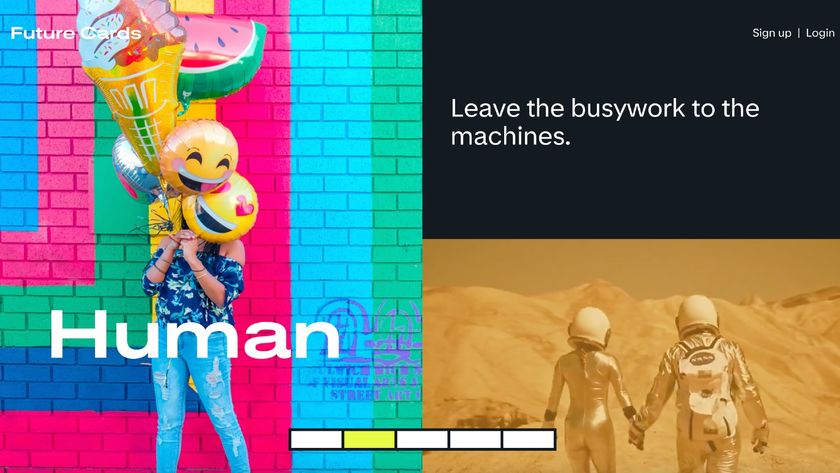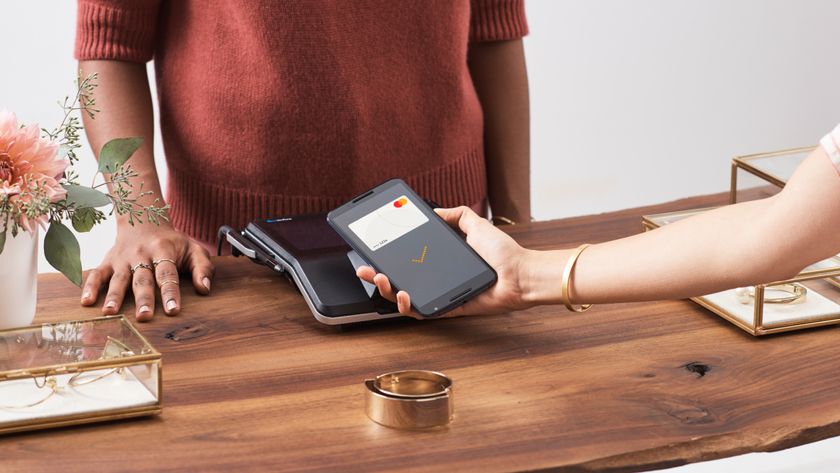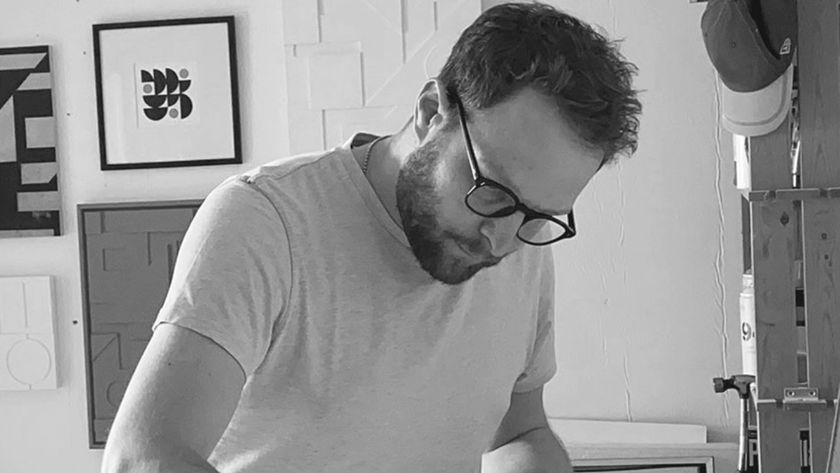Computer Arts 200: Neville Brody
Going back in time to 1995, we revisit a classic interview with one of the world's most influential designers.

CA: So you’re not a fan of interactive CD-ROMs?
NB: Most CD-ROMs feel like you’re reading a book but using a VCR control pad to turn the pages. What’s the point? Get a book or buy a video. It’s stupid trying to combine old and new technologies. People have to look for new possibilities. Working on a computer does change your way of thinking. In the beginning we were only using it to design for print. But then, if you make that leap and think that you can design on screen for screen, your thinking is altered. The computer is seen as a physical space, but it’s not. It’s a mental space. And when you’re going in there you’re going inside your own head.
The computer gives us, finally, complete temporal non-linear capabilities. Fantastic if you think about it. I saw a show on TV last week that said, whereas in the past we were taught that if you don’t learn history, you’re condemned to repeat it, it’s not like that any more. We have so much information at our finger tips, that finally we have the ability to control our destiny. It’s kind of true. Once you move out of the linear, physical world and you deal with media as mental space then anything is possible.
CA: Are designers having to learn new disciplines? You’ve spent all this time designing for the physical world and now it’s going out of fashion?
NB: The World Wide Web is coming into its own. Most web pages are so awful. They’re not designing with the net in mind. We’ve come up with an acronym: BISM. It means Big Impact Small Memory. Most people think in terms of “I’ve got this great image, and I’m gonna put it up.” And you’re sitting there waiting half an hour for something to download. It’s completely unprofessional. It’s like expecting someone to read a 3,000 page novel. You just wouldn’t do it. It’s not keeping in mind the actual practicality of the other side of the equation. When you communicate something you send it and someone receives it. Almost everything on the web has been designed with only half the equation in mind. Not much thought has gone into thinking about how people receive, view or navigate the web. A lot of people putting up web pages are using a UNIX with an ISDN line. An image is going to load in a flash. But when you’re sitting at home with a 14,400 modem and suddenly the main header is a map and it’s 150k – that could be a 20 minute download. I think it’s just selfish and inconsiderate.
CA: What steps are you taking to get around this?
NB: We’re setting up a server and a new company called nWorks. The site’s going to be called FontNet and offer a description of Fuse and the FontShop system, show the fonts off and incorporate a gallery. We’ve got 180 pages ready to go up.
CA: So you don’t rate the Internet as it stands?
NB: It’s like a road to nowhere. Someone’s built the highways and someone else has put up the flashing lights. They don’t do anything. It’s just like keep-on-going. I’ve stopped surfing completely. Well, what for?
CA: It all seemed so promising.
NB: That’s the keyword: promise. It’s all about promise. And advertising is about promise, design is about promise. And the web is the most extreme example of that. The biggest hit sites are all the porn and sex ones. And that’s about being promised something on an avenue of promise; window shopping on a red-light district. You can look but don’t touch. It’s all about image. Information has taken second place to image, but the technology is not there yet to support it.
CA: Is this the same problem multimedia CD-ROM is having? When it’s nothing more than a series of hypertext links with some pretty icons?
NB: This goes back to the computer being a physical rather than a mental space. And if you look at it like that, then most CD-ROMs act as hallucinogens. A mild LSD tab. You go on a trip, but you’re not actually going anywhere. You think there’s something going on, but it’s all chemically-induced deception. There is so much CD-ROM stuff out there where the journey is the most important thing. But you’re only on the journey because you believe you’re going somewhere.
CA: Are we just looking for a usage of the technology?
NB: It’s that old joke about why do dogs lick their balls? Because they can. We can make this interactive so we will. Let’s have more buttons. People think they have control, but they don’t. Most CD-ROM is no more interactive than a book. With a book you can open it at any page. What CD-ROM should be doing is enabling you to alter the story. That would be interactive. Approaching media as a dialogue, not as a one-way conversation. Interactive surely means feedback because you’re involved with it - it will change. The majority of the stuff that’s out there should be called inter-passive.
CA: So how do we set about designing a truly interactive product?
NB: We get a lot of stuff brought into us. Like interactive television where the viewer has choices at certain decision-making points and the storyline will take another tangent after that point. And those are definitely future possibilities. It’s in the storyline. And unfortunately that still comes from a pre-defined set of options. It’s not infinite. It’s a branch of a tree.
CA: To be truly interactive does it have to surprise the programmer?
NB: The point is that the computer itself is interactive. It’s just that most of the software coming out which proclaims interactivity isn’t. A truly interactive piece of software is Photoshop or Freehand. These products are far more interactive than any CD-ROM product you’d ever come across…

We're revisiting classic articles from issue one as we gear up for issue 200, on sale in the UK from 5 April.

Thank you for reading 5 articles this month* Join now for unlimited access
Enjoy your first month for just £1 / $1 / €1
*Read 5 free articles per month without a subscription

Join now for unlimited access
Try first month for just £1 / $1 / €1
Get the Creative Bloq Newsletter
Daily design news, reviews, how-tos and more, as picked by the editors.
The Creative Bloq team is made up of a group of design fans, and has changed and evolved since Creative Bloq began back in 2012. The current website team consists of eight full-time members of staff: Editor Georgia Coggan, Deputy Editor Rosie Hilder, Ecommerce Editor Beren Neale, Senior News Editor Daniel Piper, Editor, Digital Art and 3D Ian Dean, Tech Reviews Editor Erlingur Einarsson and Ecommerce Writer Beth Nicholls and Staff Writer Natalie Fear, as well as a roster of freelancers from around the world. The 3D World and ImagineFX magazine teams also pitch in, ensuring that content from 3D World and ImagineFX is represented on Creative Bloq.












